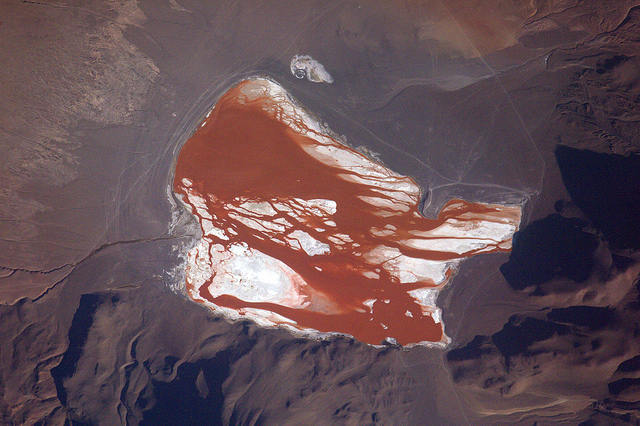Throughout the Proxima mission onboard the ISS from November 2016 to June 2017, French astronaut Thomas Pesquet took many superb photographs of Earth, which he posted on social media. Here, Laguna Colorada, in Bolivia.
On 14th May 2017, Thomas Pesquet posted this view of Laguna Colorada, with the following comment: "A red lake in South America. Fyodor Yurchikhin, who is on the International Space Station for the 5th time, tells me that it is inhabited by a large group of pink flamingos!”.
The image was taken from the ISS on 2nd May, using a Nikon D4 equipped with a 1,150mm telephoto lens. North is around 7 o'clock. We are above the famous Laguna Colorada, a salt lake located on the Bolivian altiplano.
We are almost 4,300m above sea level in an arid desert area in the Andes (South America). This salt lake has a surface area of 60km² and is only a few kilometers east of the border with Chile. It is about 35cm deep and its islets appear and disappear as it fills and evaporates.
Its incredible colouring, ranging from red tones to chestnuts through a range of brown ochres, gave it its name. These colours come from the pigmentation of certain unicellular algae which proliferate and develop there. The latter contain photosynthetic pigments called carotenoids and thus stain some sediments (although the crystals of salts resulting from evaporation remain white), but also microorganisms that will serve in the food chain...
As Thomas Pesquet points out, often these mineral-rich Andean lakes are breeding grounds for migrants and especially for flamingos, including the Flamingos of the Andes and the Flamingos of James, who take on their colours by feeding on small crustaceans, Artemia salina, which are themselves pink. Unfortunately, they are victims of global warming which is causing prolonged and more intense droughts which threaten these colonies in the short term... Another exceptional bird, the Darwin Nandou, is a species close to the Ostrich.
Find the image on Google Maps!
https://www.google.fr/maps/@-22.2023213,-67.7930932,14598m/data=!3m1!1e3?hl=fr
*Gilles Dawidowicz is a geographer, president of the Planetology Commission of the French astronomical Society.

